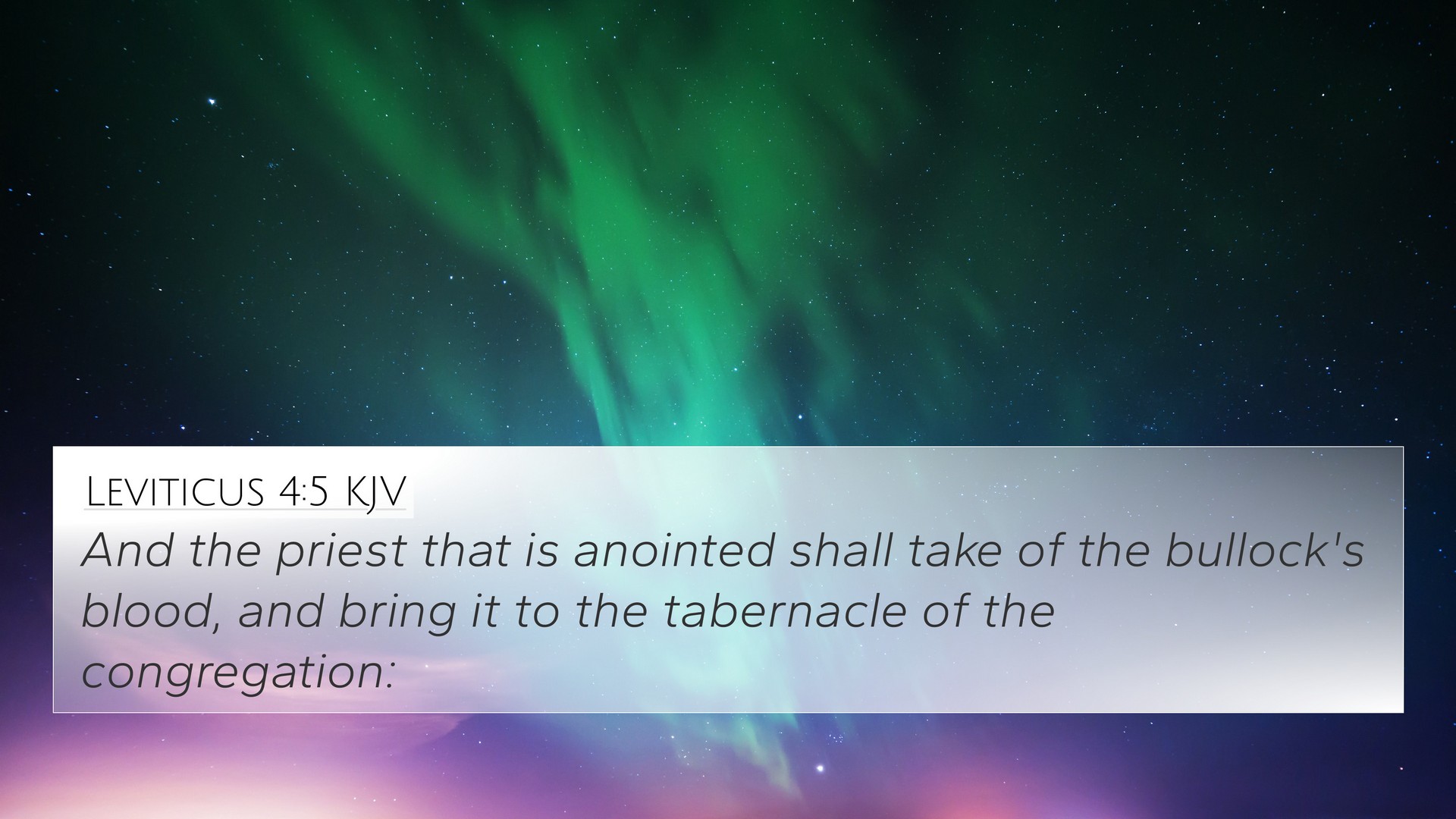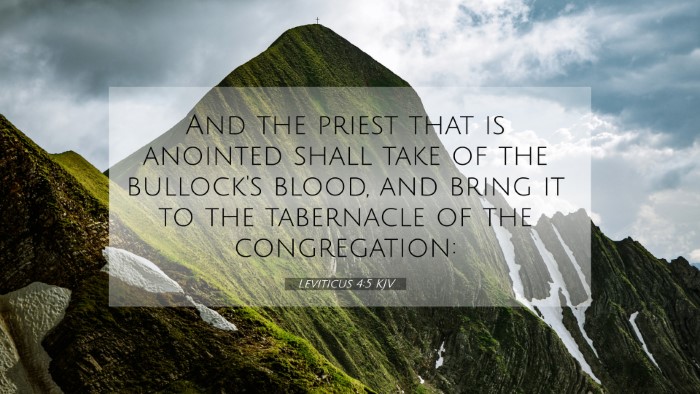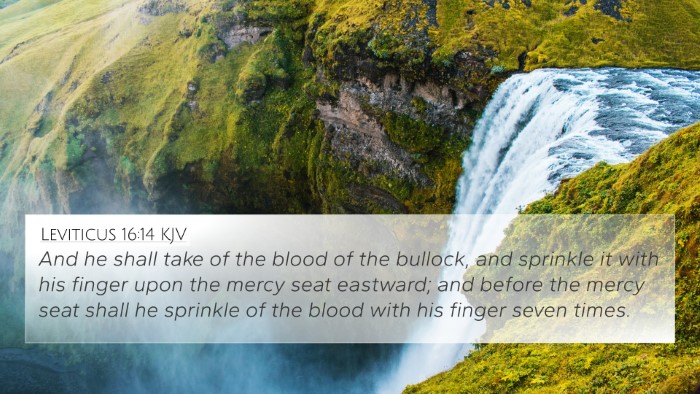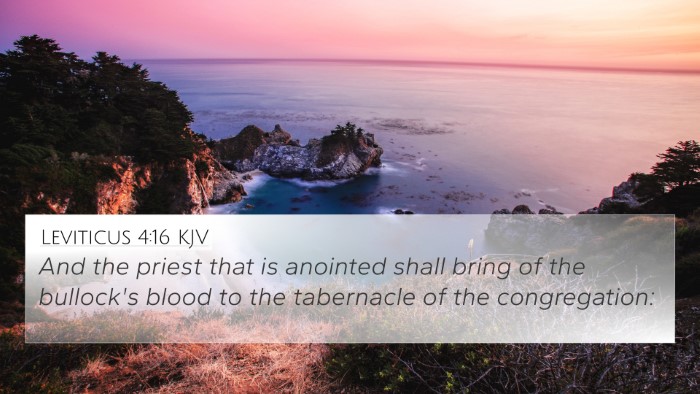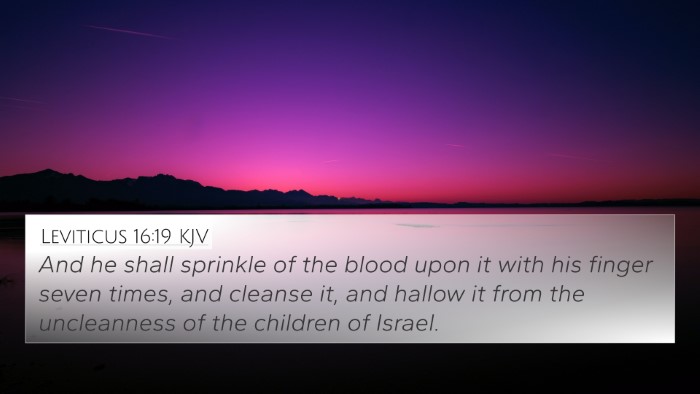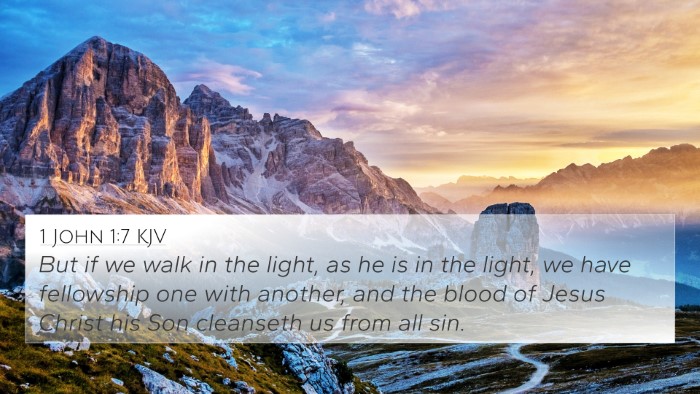Understanding Leviticus 4:5
Leviticus 4:5 states:
"And the priest shall take of the bullock’s blood, and bring it to the tabernacle of the congregation:"
Context and Significance
This verse is part of the Levitical laws concerning sin offerings, which are integral to understanding the sacrificial system in the Old Testament. It focuses on the role of the priest in mediating between God and the people and signifies the seriousness of sin and the provision for atonement.
Insights from Public Domain Commentaries
- Matthew Henry: Henry emphasizes the significance of the priest's role in the act of sacrifice, indicating that the blood of the bullock symbolizes atonement. The act of bringing blood to the tabernacle illustrates the necessity of approaching God through valid means established by divine instruction.
- Albert Barnes: Barnes points out that the act of the priest taking the blood signifies his authority and responsibility in conducting the ceremonial duties. The blood, representing life, is essential for the covering of sins, emphasizing the weight of sin in the sight of God.
- Adam Clarke: Clarke elaborates on the broader implications of these sacrifices, linking them to the ultimate sacrifice of Christ. He notes that this ritual foreshadows the greater atonement that is fulfilled in the New Testament, drawing connections between the Old Testament practice and New Testament theology.
Key Themes and Connections
The themes of sacrifice, atonement, and mediation are central to Leviticus 4:5. This verse not only stands alone but establishes a foundation for many other scriptural references:
- Hebrews 9:22: "And almost all things are by the law purged with blood; and without shedding of blood is no remission." This New Testament verse emphasizes the necessity of blood for forgiveness, echoing the Old Testament sacrificial system.
- 1 Peter 1:18-19: Relates Christ's sacrificial death to the idea of being redeemed through the precious blood of Christ, tying the Old Testament practice to its fulfillment in the New Covenant.
- Exodus 29:12: Discusses the importance of blood in the consecration of sacrifices, connecting the actions described in Leviticus to the ordination of priests.
- Romans 3:25: States that God set forth Christ as a propitiation through faith in His blood; indicating a deeper understanding of atonement that originated from Old Testament practices.
- Isaiah 53:5: Foretells the suffering servant who bears our iniquities, linking the Levitical sacrifices to prophetic fulfillments in Christ.
- John 1:29: John the Baptist refers to Jesus as "the Lamb of God, which taketh away the sin of the world," directly connecting to the sacrificial system established in Leviticus.
- Hebrews 10:4: Reflects on the insufficiency of animal sacrifices, which brings the focus back to the ultimate sacrifice of Jesus as the perfect Lamb.
- Leviticus 17:11: States, "for the life of the flesh is in the blood," reinforcing the significance of blood in God's plan for redemption.
- Matthew 26:28: In the Last Supper, Jesus speaks of His blood being shed for many for the remission of sins, drawing a direct line to the sacrifices outlined in Leviticus.
- Ephesians 1:7: "In whom we have redemption through his blood, the forgiveness of sins, according to the riches of his grace," echoing the themes of sacrifice and redemption rooted in Levitical law.
Thematic Exploration and Comparative Analysis
The exploration of this verse brings to light various themes in the Bible:
- Sacrifice: The complexity of sacrificial laws prescribed in Leviticus reveals a profound understanding of justice and mercy in God's dealings with humankind.
- Atonement: The concept of atonement is further illuminated through the lens of Christ's sacrifice, emphasizing the continuity of God’s redemptive plan throughout the Scriptures.
- Mediation: The role of the priest serves as a precursor to Christ as the ultimate High Priest, making clear the need for a mediator in relationship with God.
- Blood Covenant: The covenant of blood throughout the Bible establishes a framework for understanding God's promise and the seriousness of the sin problem.
Practical Applications
Studying Leviticus 4:5 offers believers insights into:
- Understanding Sin: A deeper comprehension of sin’s seriousness and consequences, and the lengths to which God goes for atonement.
- Faith in Christ: Recognition of the fulfillment of the sacrificial system in Jesus Christ, encouraging a life rooted in gratitude and faith.
- Engagement with Scripture: How to effectively employ tools for Bible cross-referencing to enrich personal study and understanding of inter-Biblical dialogue.
- Developing a Worshipful Heart: The sacrificial system reminds believers of Christ’s ultimate sacrifice, fostering deeper worship and reverence towards God.
Resources for Further Study
For those inclined to delve deeper into the meanings and connections in Scripture:
- Utilize a Bible concordance to find thematic connections between passages.
- Explore a Bible cross-reference guide for thematic Bible verse connections.
- Participate in cross-referencing Bible study methods to enhance your understanding of Biblical texts.
- Investigate comprehensive Bible cross-reference materials to aid in sermon preparation and personal reflection.
- Incorporate Bible chain references to create a web of interconnected scriptures that unveil deeper truths.
Conclusion
Leviticus 4:5 serves as a foundational verse that connects deeply with the themes of sacrifice, atonement, and mediation throughout both the Old and New Testaments. The priest's action in this verse points to the necessity of recognizing the serious nature of sin and the provision God has made for reconciliation. By employing tools for bible cross-referencing, believers can uncover a richer, more interconnected understanding of the Scriptures.
